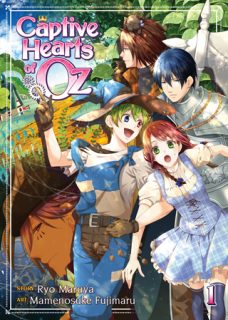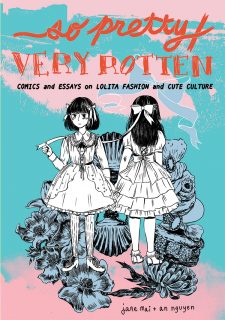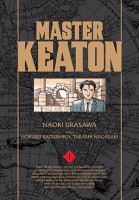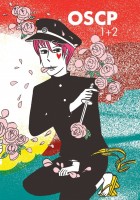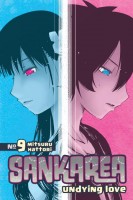My News and Reviews
Last week at Experiments in Manga, I announced the winner of the Anonymous Noise give away. The post also includes a list of manga which have characters who have notable singing voices. I got a particularly kick out of the fact that not all of the manga were necessarily music manga. Also, a bit of a heads up: I’m switching around my usual posting schedule. Normally the second week of the month would be devoted to the Bookshelf Overload feature, but I’ll be posting an in-depth review this week instead–Yeon-Sik Hong’s award winning manhwa Uncomfortably Happily is being released in English by Drawn & Quarterly on Tuesday and I’m working on putting the finishing touches on my write-up. Spoilers: I enjoyed the work immensely.
As for interesting reading elsewhere online: Hitomi Yoshio, a professor and translator, wrote a little about teaching Japanese Literature in Translation. And speaking of Japanese literature in translation, it looks like the second volume of Yu Godai’s Quantum Devil Saga: Avatar Tuner will finally be released sometime later this summer. (I enjoyed the first volume a great deal when it was published three years ago and sincerely hope that the wait between future volumes is much shorter.) I’ve known about the upcoming translation of Kazuki Sakuraba’s A Small Charred Face for a while, but now it’s official–Haikasoru will be releasing the novel in the fall. Sakuraba may best be known as the creator of Gosick, but my introduction to author’s work was through Red Girls: The Legend of the Akakuchibas, which I loved. Finally, I’d like to draw attention a series of fascinating Golden Kamuy Cultural Notes & Video References put together by @zeppelichi on Twitter.
Quick Takes
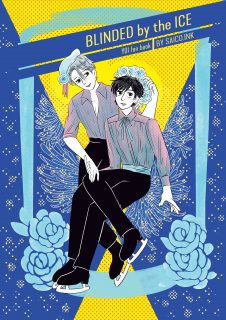 Blinded by the Ice by Saicoink (An Nguyen). In general, I don’t buy very many fan works or doujinshi, generally preferring to support artists’ original comics over their explorations of other people’s creations. However, I do occasionally make exceptions and I was very excited for Saicoink’s Yuri!!! on Ice fan book Blinded by the Ice. In addition to some bonus comics, illustrations, and research notes, the volume focuses on two main stories. The first and longest, Don’t Leave Me This Way, was probably my favorite comic of the two. I enjoyed Makes Me Think of You as well–it’s a charming and sweet holiday story which takes place after most of the events of the original anime series–but Don’t Leave Me This Way is the one that really impressed me. The comic is set in the late seventies and early eighties, featuring an alternative universe in which Victor and Yuri’s relationship must develop over both time and distance due to the fact that Victor is a high-profile athlete for the USSR. The only time the two of them can really meet in person is during competitions and even then it is very challenging and difficult. Blinded by the Ice is fantastic; I love the humor and insight that Saicoink brings to the stories and the time and effort Saicoink put into research really pays off, too.
Blinded by the Ice by Saicoink (An Nguyen). In general, I don’t buy very many fan works or doujinshi, generally preferring to support artists’ original comics over their explorations of other people’s creations. However, I do occasionally make exceptions and I was very excited for Saicoink’s Yuri!!! on Ice fan book Blinded by the Ice. In addition to some bonus comics, illustrations, and research notes, the volume focuses on two main stories. The first and longest, Don’t Leave Me This Way, was probably my favorite comic of the two. I enjoyed Makes Me Think of You as well–it’s a charming and sweet holiday story which takes place after most of the events of the original anime series–but Don’t Leave Me This Way is the one that really impressed me. The comic is set in the late seventies and early eighties, featuring an alternative universe in which Victor and Yuri’s relationship must develop over both time and distance due to the fact that Victor is a high-profile athlete for the USSR. The only time the two of them can really meet in person is during competitions and even then it is very challenging and difficult. Blinded by the Ice is fantastic; I love the humor and insight that Saicoink brings to the stories and the time and effort Saicoink put into research really pays off, too.
 Delicious in Dungeon, Volume 1 by Ryoko Kui. I enjoy tabletop role-playing games (or at least enjoy being present while other people are playing them) and I love food manga, so Delicious in Dungeon was a series that immediately caught my attention. The groups that I’ve played pen and paper RPGs with actually tended to devote a fair amount of attention to the food within the games. Our adventures never quite turned out how it does for Laois and his dungeoning companions, though. When, partially due to hunger, his party is nearly wiped out by a dragon, Laois and the other survivors find themselves facing the prospect of having to launch a rescue mission to save one of their own. There’s just one problem: their supplies are limited and they don’t have any food. And so Laois proposes that they simply find what they need to eat and sustain themselves inside the dungeon itself, something that he’s apparently been wanting to try for a very long time. The others, on the other hand, are much more skeptical. Conveniently, they are all fortunate enough to meet a dwarf who is much more skilled and experienced than Laois when it comes to making monsters palatable. The conceit of Delicious in Dungeon is frankly brilliant. Unsurprisingly, I loved the first volume of the series and definitely plan on reading more.
Delicious in Dungeon, Volume 1 by Ryoko Kui. I enjoy tabletop role-playing games (or at least enjoy being present while other people are playing them) and I love food manga, so Delicious in Dungeon was a series that immediately caught my attention. The groups that I’ve played pen and paper RPGs with actually tended to devote a fair amount of attention to the food within the games. Our adventures never quite turned out how it does for Laois and his dungeoning companions, though. When, partially due to hunger, his party is nearly wiped out by a dragon, Laois and the other survivors find themselves facing the prospect of having to launch a rescue mission to save one of their own. There’s just one problem: their supplies are limited and they don’t have any food. And so Laois proposes that they simply find what they need to eat and sustain themselves inside the dungeon itself, something that he’s apparently been wanting to try for a very long time. The others, on the other hand, are much more skeptical. Conveniently, they are all fortunate enough to meet a dwarf who is much more skilled and experienced than Laois when it comes to making monsters palatable. The conceit of Delicious in Dungeon is frankly brilliant. Unsurprisingly, I loved the first volume of the series and definitely plan on reading more.
 Descending Stories: Showa Genroku Rakugo Shinju, Volume 1 by Haruko Kumota. Although I haven’t actually had the opportunity to watch it yet, Kumota’s manga series Descending Stories was first brought to my attention due to its recent anime adaptation. The excitement surrounding the anime and the licensing of the original manga made Descending Stories one of the debuts I was most looking forward to in 2017; I was not disappointed. Rakugo is a traditional Japanese performance art which isn’t as popular as it once was but still has a devoted following. Familiarity with rakugo isn’t at all necessary to enjoy Descending Stories, but readers who have at least some basic understanding of it will likely get even more out of the series. But while rakugo is an important and interesting part of Descending Stories, it’s the relationships and drama between the characters that really make the manga so engrossing and compelling. Kyoji is an outgoing young man who has recently been released from prison. Curiously, the first thing he does with his freedom is to seek out Yakumo, a famous rakugo artist, and demand to become his apprentice. Up until this point Yakumo has always rejected those who want to study under him, but to everyone’s surprise on a whim takes Kyoji into his household.
Descending Stories: Showa Genroku Rakugo Shinju, Volume 1 by Haruko Kumota. Although I haven’t actually had the opportunity to watch it yet, Kumota’s manga series Descending Stories was first brought to my attention due to its recent anime adaptation. The excitement surrounding the anime and the licensing of the original manga made Descending Stories one of the debuts I was most looking forward to in 2017; I was not disappointed. Rakugo is a traditional Japanese performance art which isn’t as popular as it once was but still has a devoted following. Familiarity with rakugo isn’t at all necessary to enjoy Descending Stories, but readers who have at least some basic understanding of it will likely get even more out of the series. But while rakugo is an important and interesting part of Descending Stories, it’s the relationships and drama between the characters that really make the manga so engrossing and compelling. Kyoji is an outgoing young man who has recently been released from prison. Curiously, the first thing he does with his freedom is to seek out Yakumo, a famous rakugo artist, and demand to become his apprentice. Up until this point Yakumo has always rejected those who want to study under him, but to everyone’s surprise on a whim takes Kyoji into his household.

